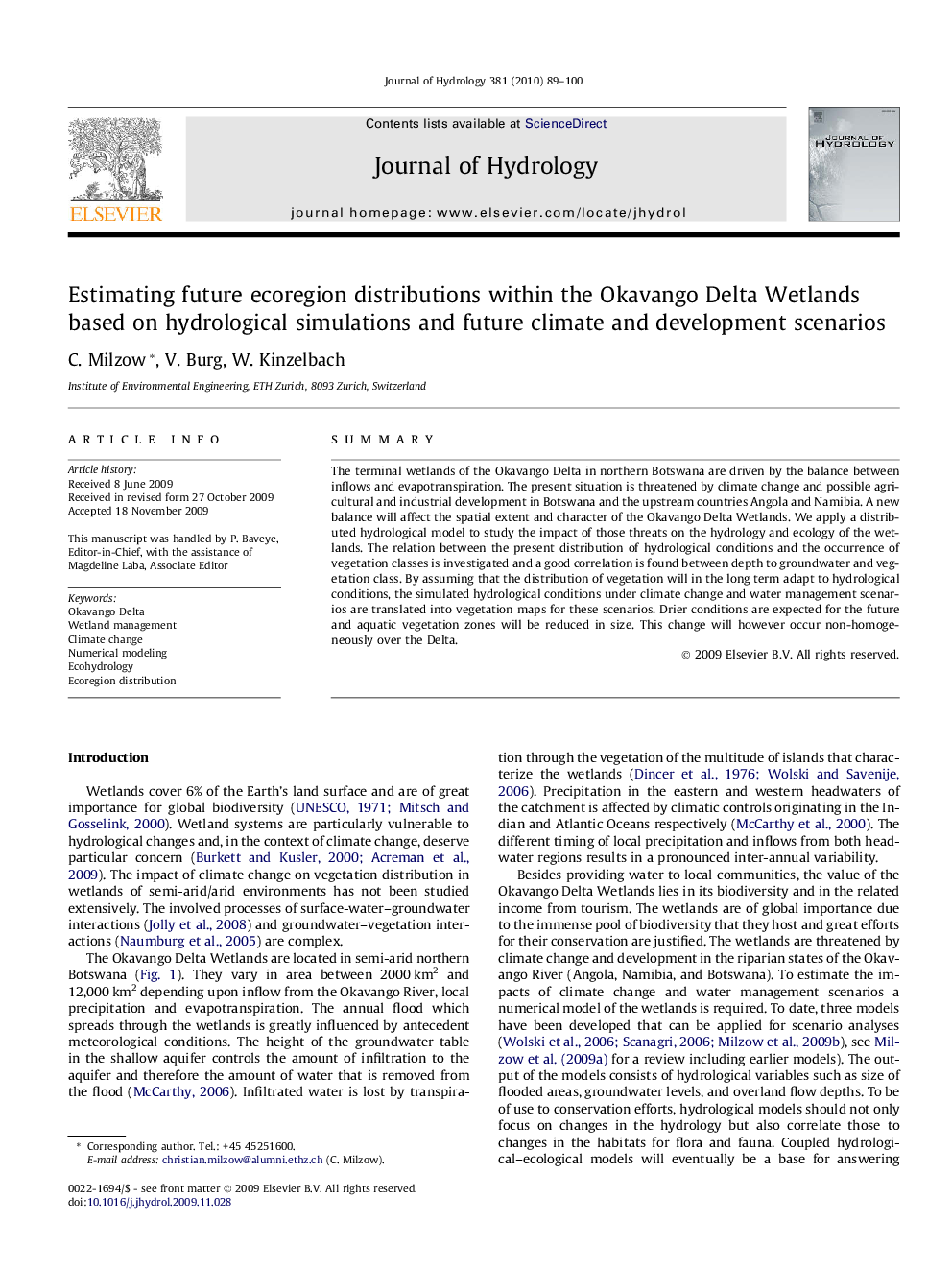| کد مقاله | کد نشریه | سال انتشار | مقاله انگلیسی | نسخه تمام متن |
|---|---|---|---|---|
| 4578330 | 1630063 | 2010 | 12 صفحه PDF | دانلود رایگان |

SummaryThe terminal wetlands of the Okavango Delta in northern Botswana are driven by the balance between inflows and evapotranspiration. The present situation is threatened by climate change and possible agricultural and industrial development in Botswana and the upstream countries Angola and Namibia. A new balance will affect the spatial extent and character of the Okavango Delta Wetlands. We apply a distributed hydrological model to study the impact of those threats on the hydrology and ecology of the wetlands. The relation between the present distribution of hydrological conditions and the occurrence of vegetation classes is investigated and a good correlation is found between depth to groundwater and vegetation class. By assuming that the distribution of vegetation will in the long term adapt to hydrological conditions, the simulated hydrological conditions under climate change and water management scenarios are translated into vegetation maps for these scenarios. Drier conditions are expected for the future and aquatic vegetation zones will be reduced in size. This change will however occur non-homogeneously over the Delta.
Journal: Journal of Hydrology - Volume 381, Issues 1–2, 5 February 2010, Pages 89–100